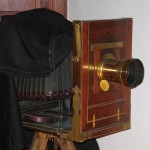 Aspirin: If you have a headache, you might reach for the aspirin. And, aspirin is also known as a drug that can help in the event of heart attack. aspirin is a very successful drug, and even all of its qualities are not fully understood. But what is understood is that the synthesis of aspirin has made for the treatment of a number of ailments. While some of the chemicals found in aspirin have been known for centuries, the discovery of a way to synthesize a pure form of aspirin is relatively recent. The official record states that Felix Hoffmann discovered how to synthesize aspirin in 1897. However, new records indicate that it was actually his supervisor, Arthur Eichengrun, who discovered it. There is speculation that Eichengrun was erased in all references to the celebrated German brand due to the fact that he was a well known Nazi — which is odd since he was a Jew. In the end, Hoffmann got the glory, but we all get the benefits.
Aspirin: If you have a headache, you might reach for the aspirin. And, aspirin is also known as a drug that can help in the event of heart attack. aspirin is a very successful drug, and even all of its qualities are not fully understood. But what is understood is that the synthesis of aspirin has made for the treatment of a number of ailments. While some of the chemicals found in aspirin have been known for centuries, the discovery of a way to synthesize a pure form of aspirin is relatively recent. The official record states that Felix Hoffmann discovered how to synthesize aspirin in 1897. However, new records indicate that it was actually his supervisor, Arthur Eichengrun, who discovered it. There is speculation that Eichengrun was erased in all references to the celebrated German brand due to the fact that he was a well known Nazi — which is odd since he was a Jew. In the end, Hoffmann got the glory, but we all get the benefits. Battery: If you want to power a device, chances are you know all about changing the battery. The discovery that you could stack voltaic cells on top of each other and end up with a device full of stored energy used to power things changed the world as we know it. First of all, in the 1780s, an Italian, Luigi Galvani, found that touching two pieces of metal to a frog’s leg caused it to twitch. He created a crude circuit and shared it with is friend Alessandro Volta, who got the brilliant idea to modify the circuits into cells and stack them on top of each other. Napoleon loved it. And today, so do the rest of us.
Battery: If you want to power a device, chances are you know all about changing the battery. The discovery that you could stack voltaic cells on top of each other and end up with a device full of stored energy used to power things changed the world as we know it. First of all, in the 1780s, an Italian, Luigi Galvani, found that touching two pieces of metal to a frog’s leg caused it to twitch. He created a crude circuit and shared it with is friend Alessandro Volta, who got the brilliant idea to modify the circuits into cells and stack them on top of each other. Napoleon loved it. And today, so do the rest of us. Fiber Optics: In 1870, Irish scientist John Tyndall performed an experiment in which he observed that water could carry sunlight. All he needed to show this was a couple of buckets, a sunny day, and a tap. His lab discovery formed the basis for another lab discovery — this one by Charles Kao in the 1960s — that glass tubes could carry light. Channeling light over long distances is the whole point when it comes to fiber optics. And now we use them for a number of applications, notably communications. Fiber optics has made high speed Internet and cable possible, since tubes of glass or plastic are more efficient signal transmitters that metal wires. The work has connected the world, and formed the basis for other technologies. Kao was honored in 2009 with a Nobel Prize in physics.
Fiber Optics: In 1870, Irish scientist John Tyndall performed an experiment in which he observed that water could carry sunlight. All he needed to show this was a couple of buckets, a sunny day, and a tap. His lab discovery formed the basis for another lab discovery — this one by Charles Kao in the 1960s — that glass tubes could carry light. Channeling light over long distances is the whole point when it comes to fiber optics. And now we use them for a number of applications, notably communications. Fiber optics has made high speed Internet and cable possible, since tubes of glass or plastic are more efficient signal transmitters that metal wires. The work has connected the world, and formed the basis for other technologies. Kao was honored in 2009 with a Nobel Prize in physics. Camera: The principles upon which the modern camera are based have been known since the 11th century, when the Arabic scientist Ibn al-Haytham describe the camera obscura. This device was more of a projector. The more modern version of the camera, which was invented by Joseph Nicéphore Niépce in 1826, used principles discovered by Johann Zahn in 1685 and Jacques Daguerre and William Fox Talbot, both of whom figured out how to use different processes to record an image. Niépce discovered that a mixture of chalk and silver darkened when exposed to light, and that it would retain its permanence. Later on, George Eastman used his company, Kodak, to make photography quite popular. And, thanks to the digital age, images are even easier to capture.
Camera: The principles upon which the modern camera are based have been known since the 11th century, when the Arabic scientist Ibn al-Haytham describe the camera obscura. This device was more of a projector. The more modern version of the camera, which was invented by Joseph Nicéphore Niépce in 1826, used principles discovered by Johann Zahn in 1685 and Jacques Daguerre and William Fox Talbot, both of whom figured out how to use different processes to record an image. Niépce discovered that a mixture of chalk and silver darkened when exposed to light, and that it would retain its permanence. Later on, George Eastman used his company, Kodak, to make photography quite popular. And, thanks to the digital age, images are even easier to capture. Time Dilation: As part of his theory of relativity, Albert Einstein proposed the phenomena known as time dilation. This takes place when time is experienced differently by different people, due to their relative velocity, or due to a difference in distance to a gravitational mass. The common illustration of this is that two people carry clocks that are similar in make and function. They are set for the same time initially, but due to difference in location relative to a nearby gravitational mass, or due to motion, there comes a point when each person observes that the other person’s clock is in error. It is a dizzying concept, but a cool one. And it has been shown in the lab, using particle accelerators, measuring Doppler shift, physically flying atomic clocks around the world and even GPS.
Time Dilation: As part of his theory of relativity, Albert Einstein proposed the phenomena known as time dilation. This takes place when time is experienced differently by different people, due to their relative velocity, or due to a difference in distance to a gravitational mass. The common illustration of this is that two people carry clocks that are similar in make and function. They are set for the same time initially, but due to difference in location relative to a nearby gravitational mass, or due to motion, there comes a point when each person observes that the other person’s clock is in error. It is a dizzying concept, but a cool one. And it has been shown in the lab, using particle accelerators, measuring Doppler shift, physically flying atomic clocks around the world and even GPS.

